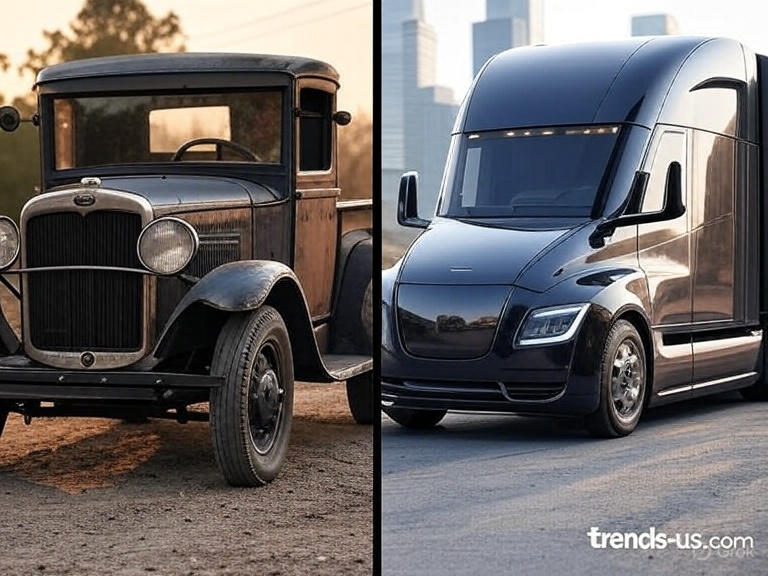Exploring the Evolution of Trucks: From Workhorses to Modern Marvels
The truck has long been a symbol of strength and utility, evolving from a simple workhorse into a sophisticated machine that embodies cutting-edge technology and design. This transformation has not only changed the way we perceive trucks but also how they function in our daily lives and industries.
The Early Days: Origins of the Truck
The journey of the truck began in the late 19th century with the advent of motorized vehicles. The first commercial trucks were essentially motorized versions of horse-drawn wagons, designed primarily for transporting goods. These early models, often powered by steam or internal combustion engines, were basic in design and functionality, focusing primarily on durability and load capacity.
As industries grew, so did the demand for more efficient transportation methods. By the early 20th century, manufacturers like Ford and International Harvester began producing trucks in larger quantities, catering to farmers, construction workers, and businesses. These vehicles were built to withstand heavy loads and rough terrains, solidifying their reputation as indispensable workhorses.
The Golden Age of Trucks: 1940s to 1970s
The post-World War II era marked a significant turning point in truck evolution. With advancements in technology and materials, trucks became more powerful and versatile. This period saw the introduction of features such as automatic transmissions, improved suspension systems, and enhanced safety measures.
The 1950s and 1960s also brought about a cultural shift. Trucks began to be marketed not just as tools for work but as lifestyle vehicles. The rise of the pickup truck during this time exemplified this change, appealing to both blue-collar workers and suburban families. Manufacturers like Chevrolet and Ford capitalized on this trend, leading to a boom in sales and a redefinition of what trucks represented in American culture.
The Modern Era: Technology Meets Functionality
As we moved into the late 20th century and early 21st century, the truck underwent another major transformation. The introduction of computer technology revolutionized vehicle design and manufacturing processes. Modern trucks now feature advanced electronics, including GPS navigation systems, Bluetooth connectivity, and sophisticated driver-assistance technologies.
Fuel efficiency became a primary concern as environmental awareness grew. Manufacturers began developing hybrid and electric trucks, aiming to reduce emissions without sacrificing performance. The introduction of autonomous driving technology is also on the horizon, promising to redefine logistics and transportation once again.
Today’s trucks are equipped with features that enhance safety, comfort, and efficiency. Innovations such as lane-keeping assist, adaptive cruise control, and collision detection systems have made driving safer for both truck operators and other road users.
Trucks in the Future: A Glimpse Ahead
Looking forward, the future of trucks appears bright with ongoing advancements in technology. The integration of artificial intelligence (AI) is expected to further enhance vehicle performance and safety. Autonomous trucks are being tested on highways, which could revolutionize freight transportation by reducing costs and improving delivery times.
Additionally, sustainability will continue to drive innovation in the truck industry. The push for electric vehicles is not just a trend but a necessity in combating climate change. As battery technology improves, we can expect electric trucks to become more prevalent on our roads.
Conclusion: A Legacy of Adaptation
The evolution of trucks from simple workhorses to modern marvels reflects broader changes in society, technology, and the economy. As we continue to innovate and adapt, trucks will remain an essential part of our infrastructure, shaping the way we transport goods and connect communities. Whether they are carrying heavy loads across the country or serving as family vehicles, trucks will undoubtedly continue to evolve, meeting the demands of an ever-changing world.



